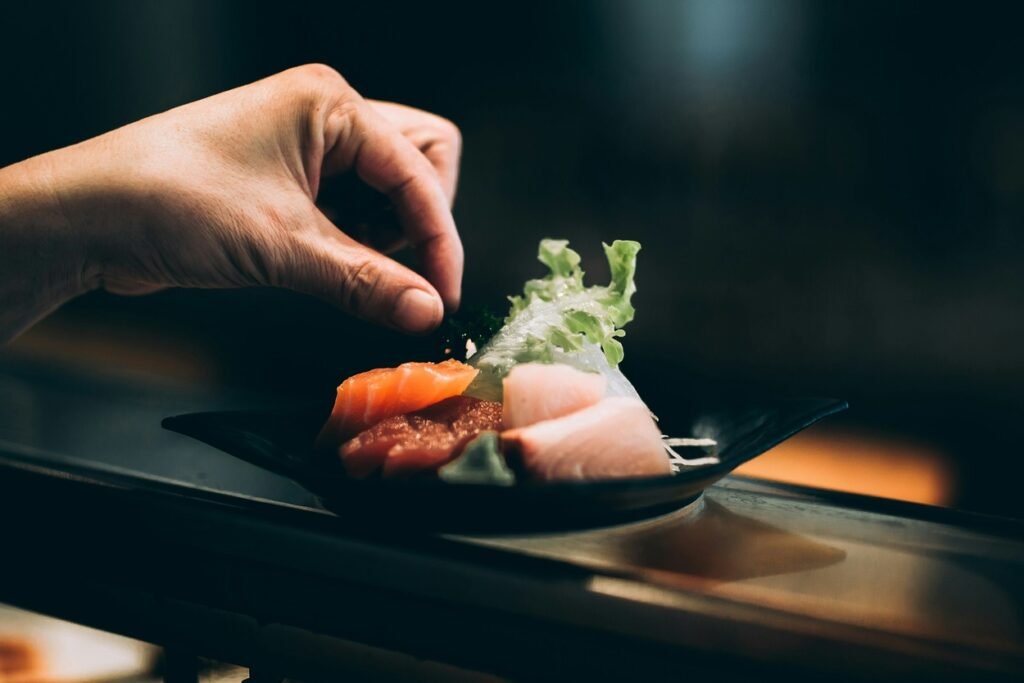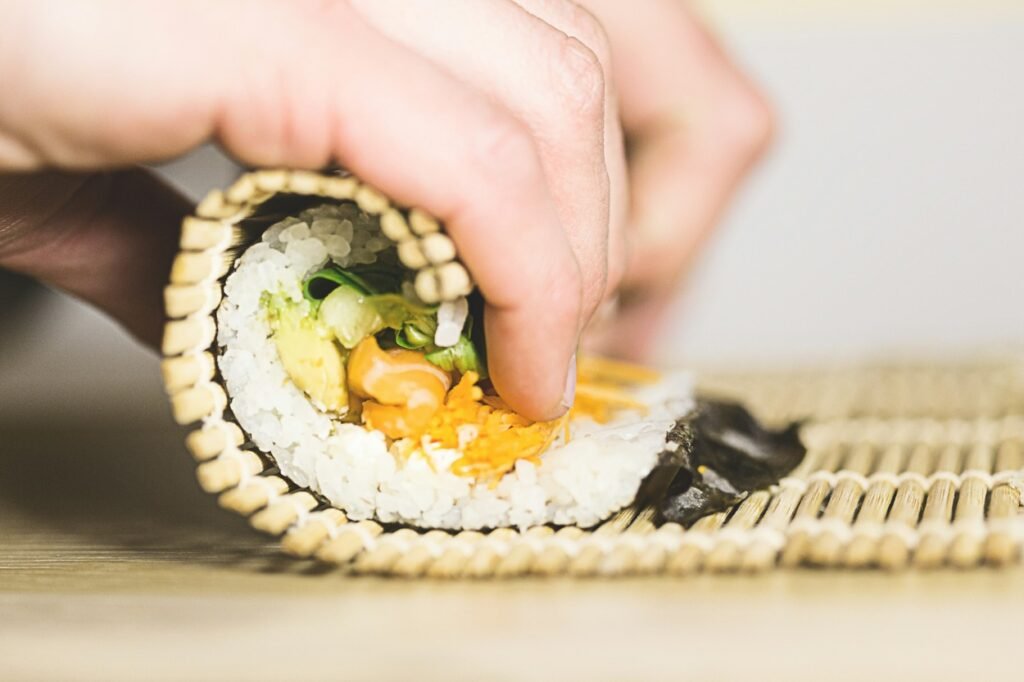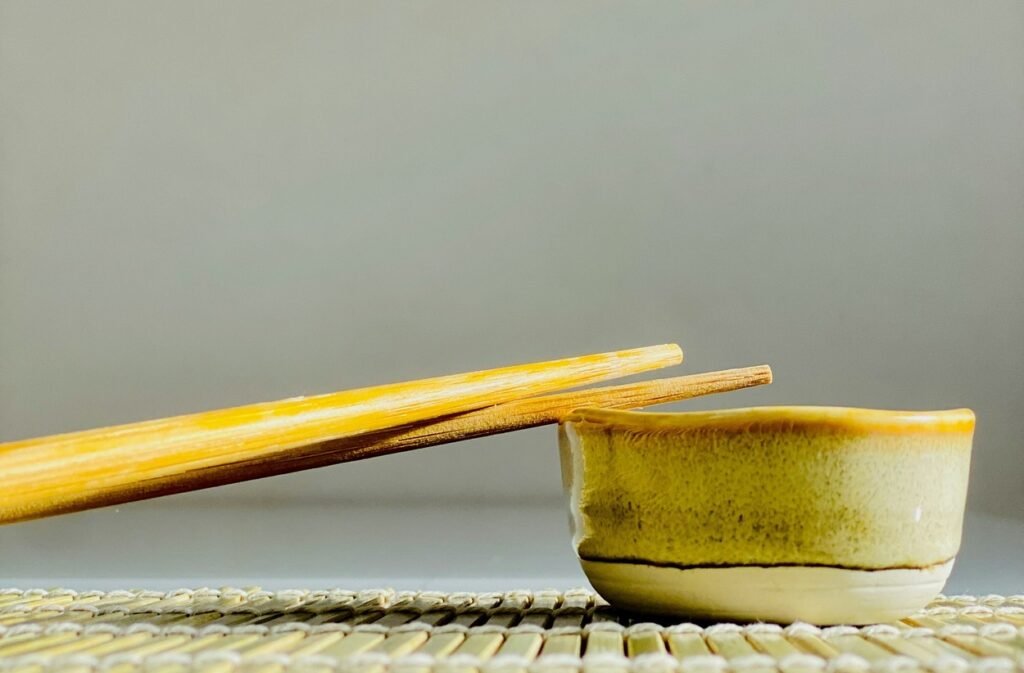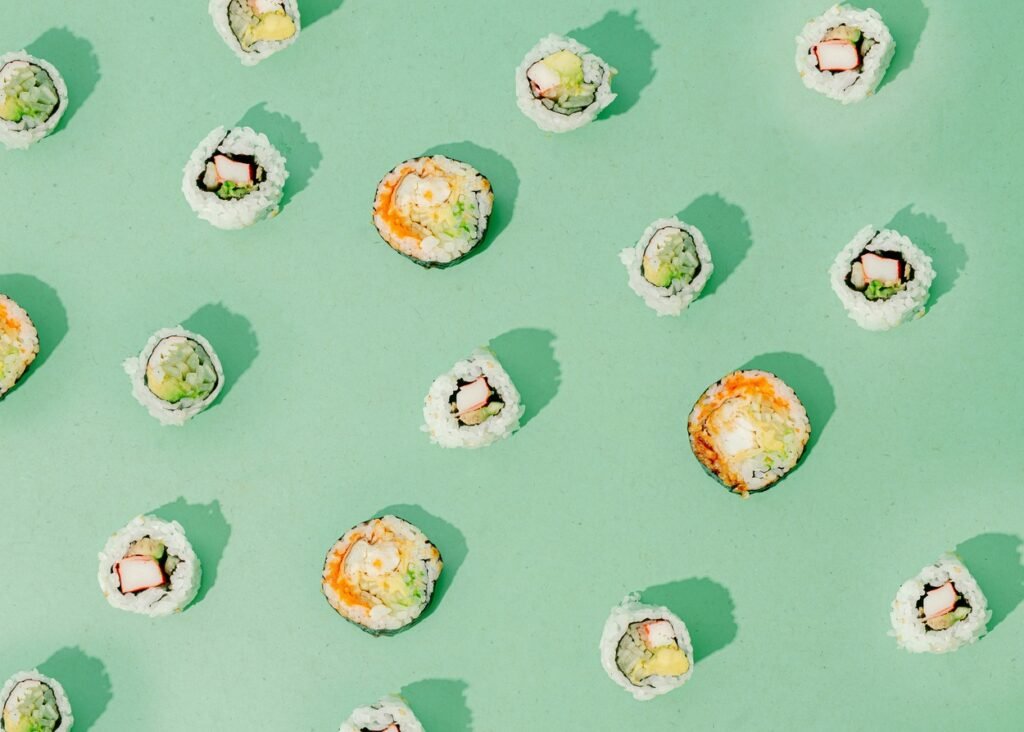As a parent of two energetic kids, ages 6 and 5, I’ve navigated my fair share of culinary adventures. From picky eating phases to enthusiastic attempts at “helping” in the kitchen, food is always an adventure in our house. So, when the topic of sushi comes up, it begs the question: can a toddler eat sushi?
Let’s dive into this fishy topic with a bit of humor and practical advice.
The Basics: What is Sushi?
Before we talk about toddlers and sushi, let’s break down what sushi actually is. Sushi is a Japanese dish that typically consists of vinegared rice, raw or cooked seafood, and various other ingredients like vegetables and seaweed. The main types of sushi include:
- Nigiri: A slice of raw fish atop a small mound of rice.
- Maki: Rolled sushi, usually with seaweed on the outside.
- Sashimi: Slices of raw fish without rice (not technically sushi, but often included in sushi discussions).
- Temaki: Hand-rolled sushi in the form of a cone.
- Uramaki: Rolls with rice on the shell and seaweed inside.

Is Sushi Safe for Toddlers?
The main concern with toddlers eating sushi is the risk of foodborne illness from raw fish. Young children have developing immune systems, making them more susceptible to infections.
Raw Fish: Proceed with Caution
Raw fish can carry parasites like tapeworms and bacteria such as Salmonella or Listeria. Toddlers’ immune systems are still developing, making them more vulnerable to foodborne illnesses. If you’re considering giving your toddler raw fish, it’s essential to ensure it’s from a reputable source that follows strict health and safety guidelines.
Cooked Sushi: A Safer Alternative
Cooked sushi options like tempura shrimp, crab (often imitation), or even teriyaki chicken can be great alternatives. Just be cautious with certain fish like tuna and mackerel, even when cooked, due to their higher mercury levels.
Vegetarian Sushi: Safe and Tasty
Sushi doesn’t have to include fish. There are plenty of vegetarian options that are both safe and delicious, such as avocado rolls, cucumber rolls, and tamago (sweet, cooked egg omelet on rice).
Introducing Sushi to Your Toddler
If you’re eager to introduce sushi to your little one, there are safe and fun ways to do it.
Start with Cooked Options
California rolls typically contain cooked crab (often imitation) and avocado. Shrimp tempura rolls offer a tasty, cooked option, and tamago (sweet, cooked egg omelet on rice) is a favorite with many kids.
Make It a Fun Experience
Turning sushi night into a family event can make it more enjoyable for everyone. Set up a sushi-making station at home. Let the kids choose their fillings and help roll their creations. It’s a great way to bond and ensure they’re eating ingredients you’re comfortable with. Make it a fun game to try different types of sushi and rate them. This can encourage adventurous eating in a controlled and safe manner.

Nutritional Benefits of Sushi
Sushi can be nutritious, offering a variety of vitamins and minerals. Fish is rich in omega-3 fatty acids, which are very important for brain development. Vegetables are packed with vitamins, minerals, and fiber, while seaweed contains iodine, which is important for thyroid function.
While sushi can be healthy, portion control is key. Sushi rice contains sugar and salt, so it’s best enjoyed in moderation.
Mind the Choking Hazard
Sushi can be a choking hazard due to its size and texture. Cut sushi into smaller, bite-sized pieces and always supervise your toddler while they’re eating sushi. Motivate your child to chew their food thoroughly.
Personal Experience: Sushi Night at Our House
In our household, sushi night is a hit. My 6-year-old son loves the adventure of trying new foods, while my 5-year-old daughter prefers the simpler, cooked options.
Preparation
We set up a mini sushi bar with cooked chicken, avocado, cucumber, and imitation crab. We use sushi mats, seaweed sheets, and a sharp knife for the adults to handle.
Participation
The kids help with rolling (and unrolling) their sushi, making it a fun and messy activity. They get to choose their fillings, making them more excited to eat what they’ve created.
Eating
We encourage them to try a bit of everything, but there’s no pressure. And yes, there’s always a lot of giggling when the seaweed sticks to their little fingers. My son loves California rolls, while my daughter enjoys cucumber and avocado rolls.
Fun Tips for Sushi Night with Kids
Making sushi night a fun and memorable experience can encourage your kids to try new foods and enjoy the process.
Sushi Platter Art
Arrange the sushi in fun shapes or patterns on the plate. Have themed sushi nights with decorations and music to match.
Kid-Friendly Chopsticks
Use training chopsticks with a connector to make it easier for little hands. Sushi can also be enjoyed as finger food for younger kids.

Final Thoughts: To Sushi or Not to Sushi?
So, can a toddler eat sushi? Yes, but with some precautions. Stick to cooked and vegetarian options, make it a fun experience, and always supervise them. With these tips, you can turn sushi night into a delightful family tradition.
Remember, every child is different. What works for my 6 and 5-year-old might not work for your little one. Always consult your pediatrician if you have any concerns about introducing new foods to your toddler.
And who knows? Your toddler might just surprise you with their adventurous palate. Happy sushi eating!
